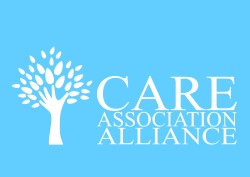Fire Safety
The Fire Safety Act was updated in May 2022. This is in response to the Grenfell Tower fire and is particularly relevant to care homes that may have external cladding or other structural issues that could result in the rapid spread of fire. Background to these changes is set out here: Fire Safety Act 2021 and Fire Safety (England) Regulations 2022 (nationalfirechiefs.org.uk)
The changes require fire risk assessments of buildings with two or more sets of domestic premises to be updated to take account of structure, external walls and doors, if they have not already done so.
The guidance (link below) is to support responsible persons to undertake this task. There is no legal requirement to follow this guidance. However, a failure to do so could be taken into account in any subsequent investigations into a fire. For peace of mind, and to demonstrate compliance, it may be a useful task to complete the risk assessment scoring tool which is available with the full guidance here:
Fire_Safety_Act_Article_50_guidance.pdf (publishing.service.gov.uk)
To produce a fire risk assessment, key information about the building should be gathered including:
- The height of the building (in storeys)
- If known, the composition of the external wall and covering materials (if relevant).
- The most recent fire risk assessment
- Whether there are balconies and the composition of windows
- Number of staircases ✓ Details of whether the building has been recently refurbished
- The type of evacuation strategy in place
- Whether the building has fire safety systems, like sprinklers or communal fire alarms
- Whether vulnerable residents live in your building
- Details of whether there have been any recent fires or serious antisocial behaviour
The Fire Risk Assessment Prioritisation Tool will provide a score and priority rating for the building based on the information you enter into the tool.
You can select “don’t know” as a response for the following questions:
- The type of materials predominantly on the external walls
- Whether materials on the external walls are likely to ignite and spread fire easily
- Whether materials on balconies are likely to ignite and spread fire easily
- The type of materials mainly used on window frames
But if you select “don’t know” as a response, you will get the maximum score available for the question. If you believe your building may be in “Tier 1” – high risk or your scoring places you in this category, you need to take immediate action and engage a competent professional who can advise on external walls and update your fire risk assessment.
There is also an existing protocol between the CQC and the fire service that shows how they may share information and work together to ensure the fire safety of registered premises.

